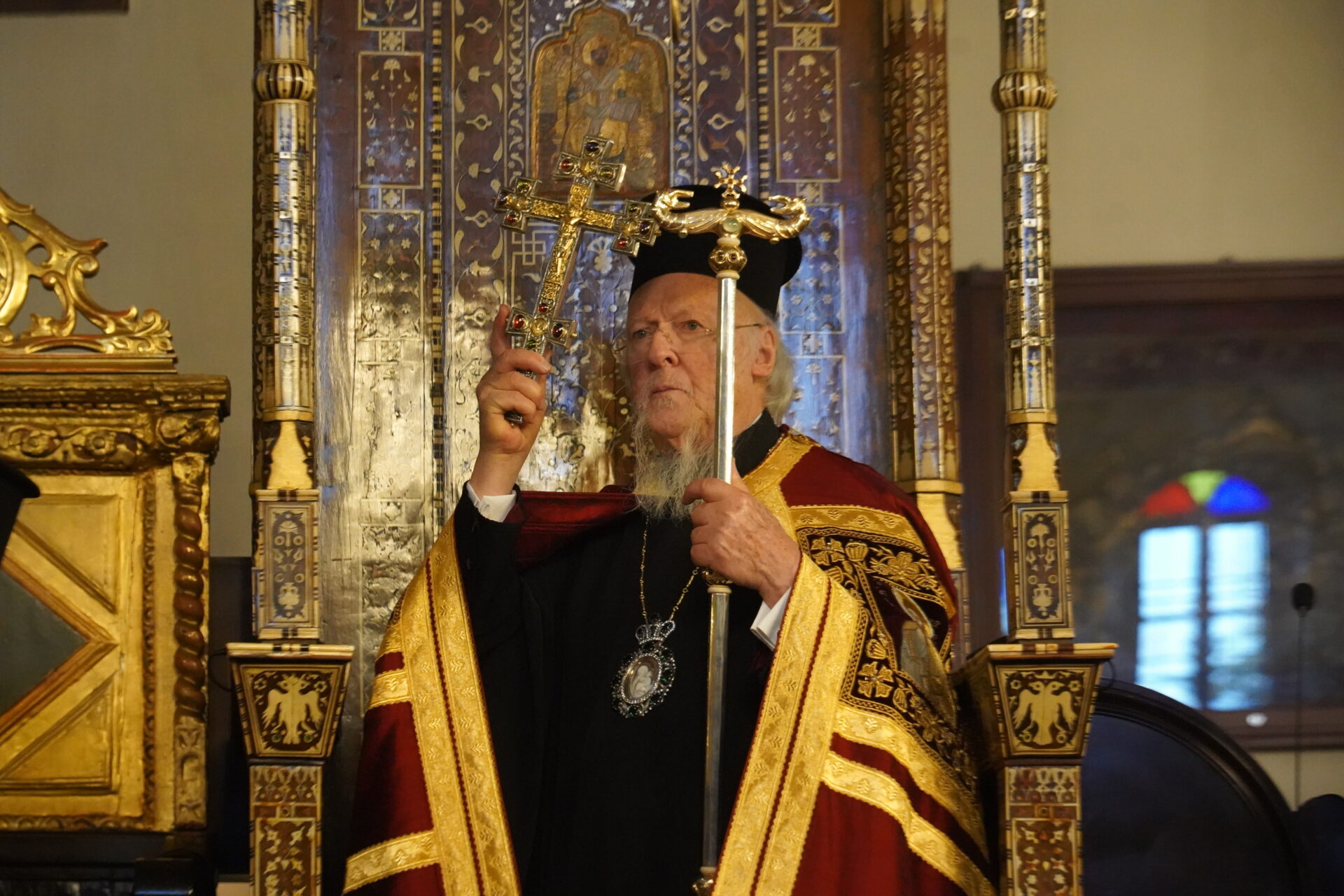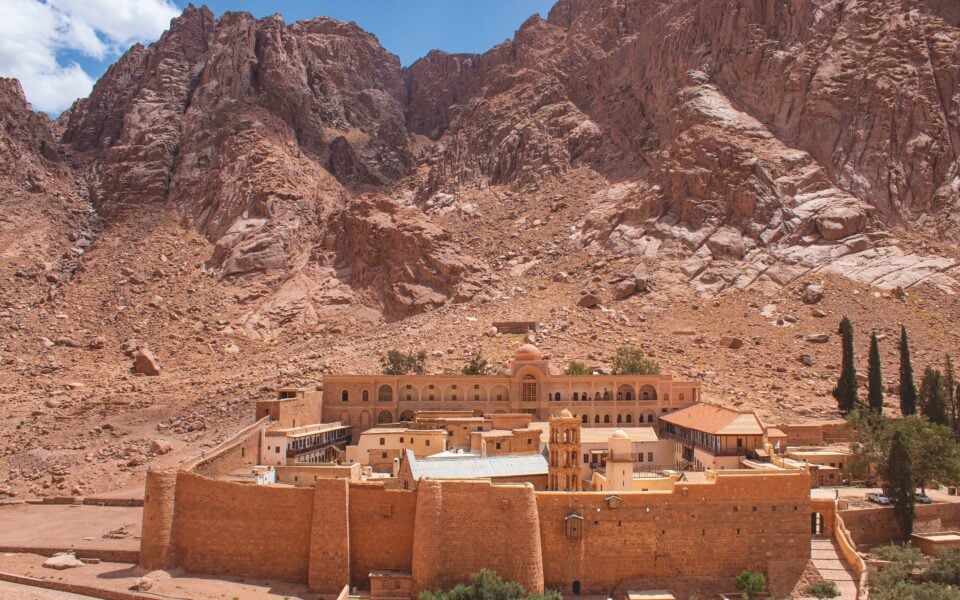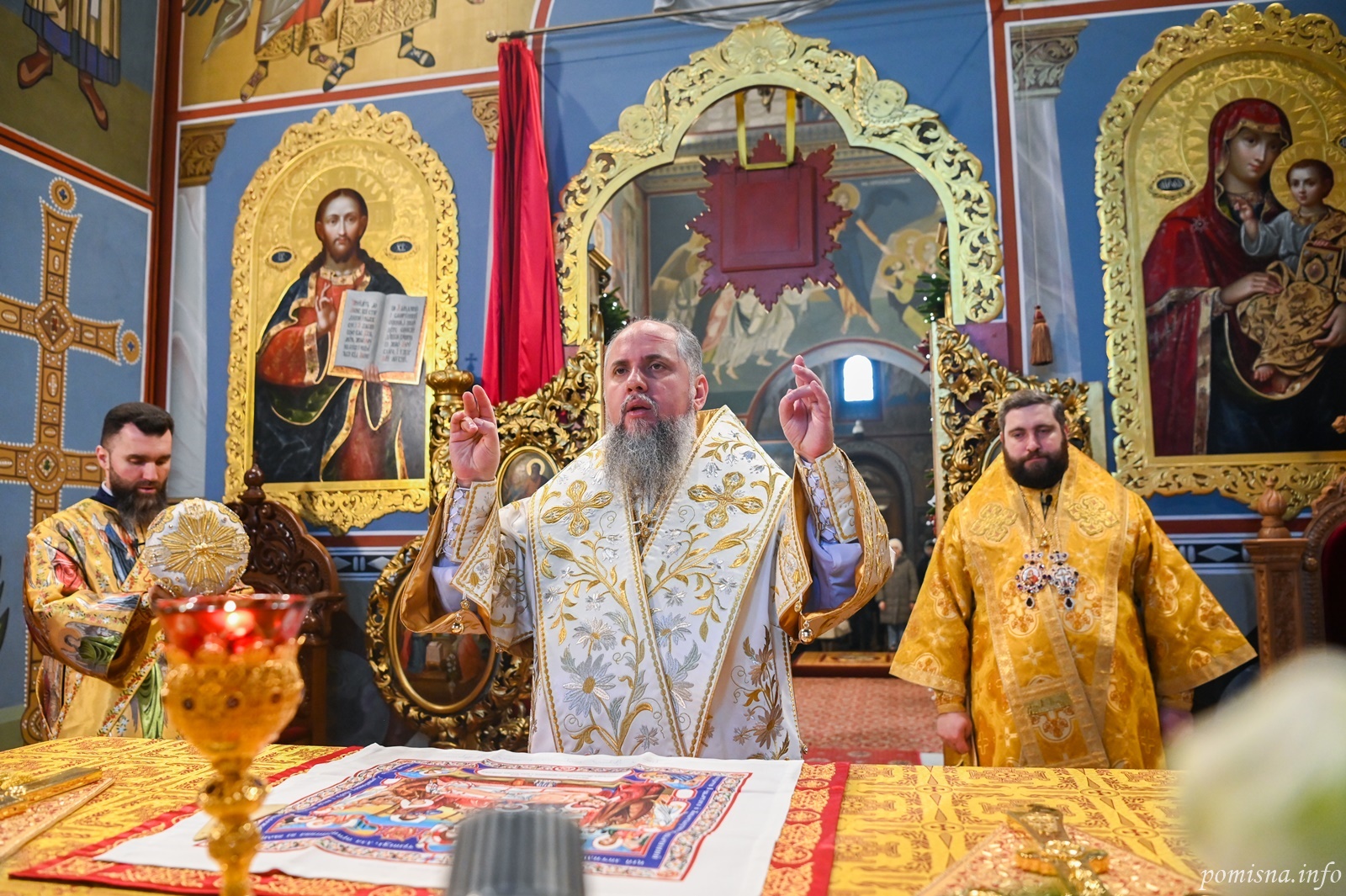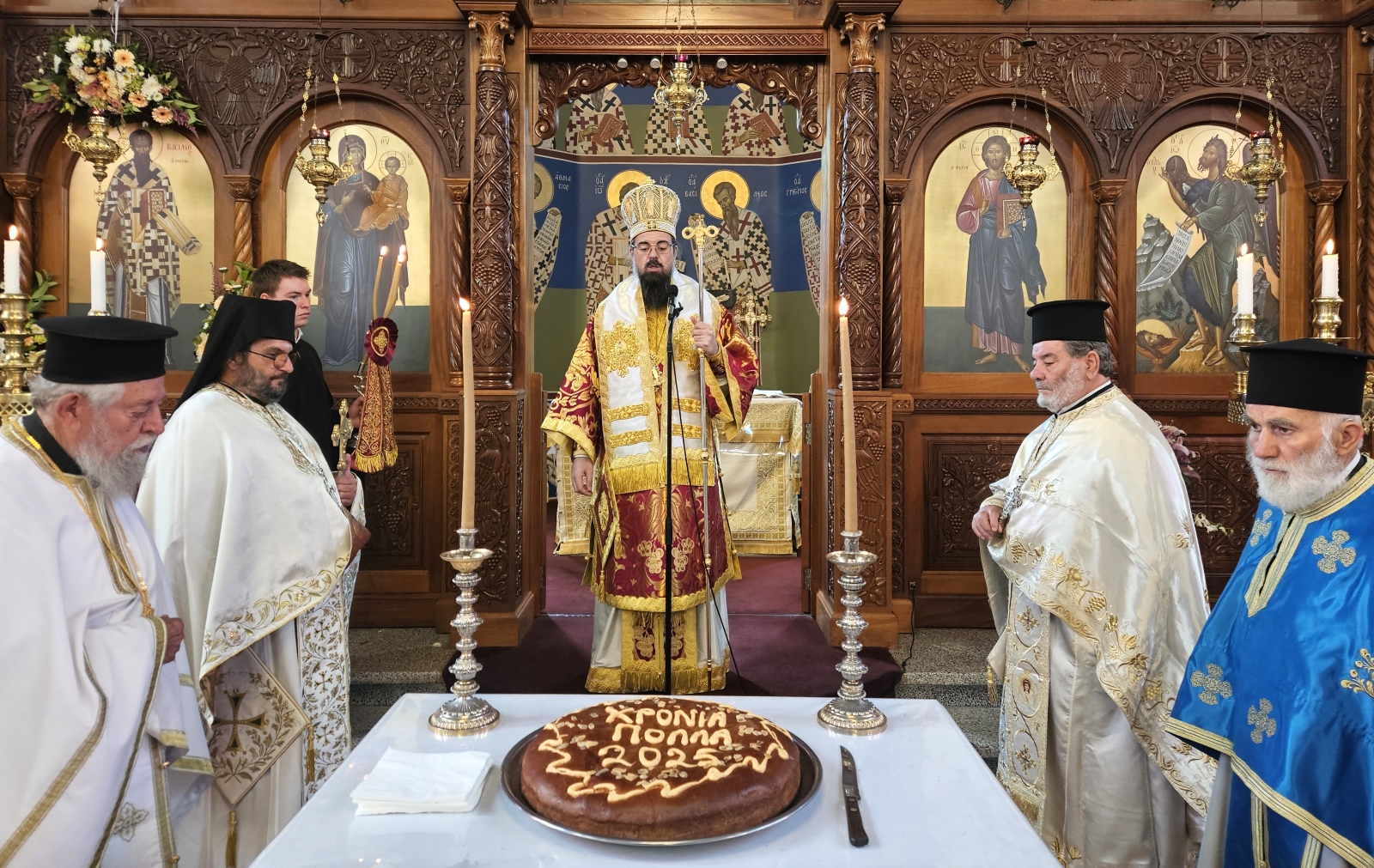Ecumenical Patriarch Bartholomew: “The Most Holy Theotokos, symbol of unity”
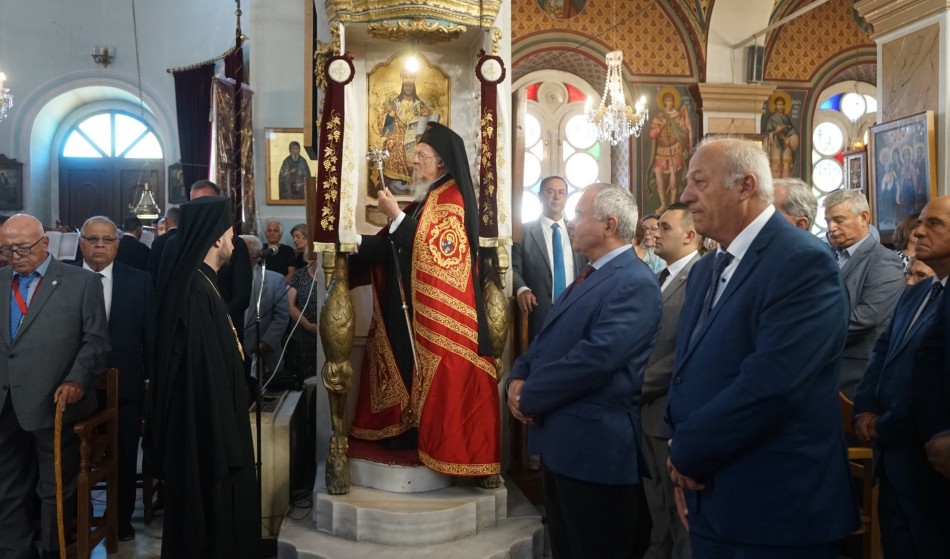

On the last day of his visit to Chios, Sunday, 8 September 2024, the Feast of the Nativity of the Most Holy Theotokos, His All-Holiness Ecumenical Patriarch Bartholomew presided over the Divine Liturgy at the Church of the Dormition of the Theotokos in Kallimasia.
After the Dismissal, His All-Holiness led a memorial service for his late predecessors from Kallimasia, Patriarchs Joachim II and Joachim IV.
Following the Memorial Service, His Eminence Metropolitan Markos of Chios, addressed the Ecumenical Patriarch, highlighting the timeless concern of the Ecumenical Throne for the preservation of education and the support of its children worldwide. He noted that the Mother Church has served as a saving ark of faith and tradition, preserved by the struggles and sacrifices of the clergy and laity of the Ecumenical Throne. Reflecting on the reality formed after 1453, he emphasised the following:
“For the Ecumenical Patriarchate, the education of clergy and laity was a matter of vital necessity. It would have been impossible to transmit its message without meeting this need. Without the necessary education, the ministers of the Church would not have been able to fulfill even their basic liturgical duties or to intervene in the formation and development of public life.
Thus, the Patriarchal concern for the promotion of education has historically extended throughout the region, reaching even the most remote ecclesiastical provinces and communities under the canonical jurisdiction of the Ecumenical Throne, and covering all levels of education.
Gradually, educational institutions and colleges were established throughout the country, especially in the major urban centres. However, they did not function without obstacles, since the state administration never gave up its intention to Islamise the subjugated population, nor its greed for wealth”.
The Metropolitan of Chios also discussed in detail the contributions of many Patriarchs, emphasising in particular the work and service of the two aforementioned Patriarchs of Kallimasia.
In his response, the Ecumenical Patriarch, on the occasion of the Feast of the Nativity of the Most Holy Theotokos, spoke of the special honour that the Church bestows upon her.
“The Most Holy Theotokos has many attributes and therefore many names. Today we want to emphasise her role as a symbol of unity. Indeed, this is what she is, for she gave birth to the Son of God, who came to earth for the salvation of the entire human race, without distinction.
The Holy Theotokos is the common Mother who unites the children of the great family of the pan-Orthodox faithful. In all the Orthodox Churches of the world, the icon of the Mother of God holding the Christ Child necessarily occupies the first place on the left side of the iconostasis. And no one can dethrone the Theotokos from the churches and the hearts of the Orthodox faithful.
Moreover, we consider the Theotokos as the Mother and Protector of all the numerous children of our Ecumenical Throne throughout the world, and we entrust to her the intercession for their progress and growth in Christ. We are paternally proud when we witness the devotion of the children of the Mother Church of Constantinople to the Most Holy Theotokos, a devotion instilled and inspired in them from childhood by their priceless Greek Mothers. This is the greatness of our religious and ancestral traditions, as well as our heritage, which knows how to preserve and transmit these ever-living traditions from generation to generation”.
In another part of his speech, His All-Holiness emphasised:
“On this visit to the birthplace of our late predecessors Joachim II and Joachim IV, the words of the great tragic poet Euripides spontaneously come to our lips: “Nothing is dearer to a man than his native land,” indeed, nothing is dearer to a man than the land in which he first saw the light of day. We conclude this from the overwhelming feelings of joy and emotion that we experience whenever we visit our birthplace, also in the Aegean, Imbros, as we did two weeks ago, and the village of Agioi Theodoroi, where we were born, spent our childhood years and received our first education”.
The Patriarch also spoke about his predecessors from Kallimasia, Patriarchs Joachim II and Joachim IV. Regarding the former, he said:
“We were particularly moved by the reference to the life of Joachim II, who served as a young choirmaster in the Church of St. John the Chiot in Galata, on Mastihopolon Street, a church that belonged to the Chios community of Constantinople. We also served as young deacons in this church. Unfortunately, today, against all sense of justice, the church is occupied and its appearance is discouraging. We pray to the Almighty that the church will soon be returned to the Romanian community to which it rightfully belongs, and to the canonical jurisdiction of the Mother Church of Constantinople”.
Speaking of the character and ministry of Joachim IV, he noted:
“It was unprecedented for that time that upon his election as Patriarch he received congratulations even from Pope Leo XIII of Rome, whom he had visited when, as Metropolitan of Derkoi, he traveled to Italy for medical treatment.
Among the notable events of his brief patriarchy, which lasted barely two years (October 1884-November 1886), was the restoration of previously strained relations with the Churches of Serbia and Romania. In 1885, the latter was granted autocephaly by the Mother Church of Constantinople. We will commemorate the 140th anniversary of this event, together with the centenary of the elevation of the Romanian Church to patriarchal status, during our visit to Bucharest next year at the fraternal invitation of His Beatitude Patriarch Daniel of Romania”.
After his speech, the Ecumenical Patriarch stated:
“On the occasion of the conclusion of our official visit to Chios, we express our heartfelt gratitude to His Eminence, Shepherd of this God-protected Province, Metropolitan Markos of Chios, for the honorary invitation, the Abrahamic hospitality extended to us and our esteemed entourage, as well as for his kind words of welcome upon our arrival in his canonical jurisdiction.
We are blessed as the Holy Great Church of Christ to have you, dear brother, as the head of this historic Province of the Most Holy Ecumenical Throne! We offer you, dear people of Kallimasia, our paternal congratulations for your worthy and caring Shepherd, and we encourage you to remain always devoted to his side to continue together the long life of this Province.
Our prayerful heart is close to all the pious children of the Mother Church throughout the world. Therefore, during today’s communication, we impart to all of you and your loved ones our most affectionate paternal and patriarchal blessing. We wish all of you a blessed new ecclesiastical year and, through it, a successful return to intense work after the summer break, which, with God’s help, passed without a hitch, especially thanks to the Greek-Turkish rapprochement, which has certainly borne fruit. We fervently pray that we will continue to witness scenes like those of this summer, with visitors from Turkey in Chios and other Greek islands, and many from Greece in the Queen of Cities and other historic regions of the neighboring country. We congratulate you from the bottom of our hearts, dear Chios, for setting an excellent example of true hospitality and for teaching us all that the seas do not divide us, but unite us”.
In a subsequent moment of deep emotion, the Ecumenical Patriarch led a Trisagion service at the grave of the late Patriarch Joachim IV.
At noon, the Patriarch blessed the meal hosted in his honour by the Mayor of Chios, Mr. Ioannis Malafis, and in a brief speech, he thanked the Metropolitan and all the local authorities for the warm welcome and hospitality they had extended to him during his stay in Chios.
In the late afternoon, accompanied by his entourage, the Ecumenical Patriarch departed for the neighboring town of Çeşme.
Source: orthodoxtimes.com

